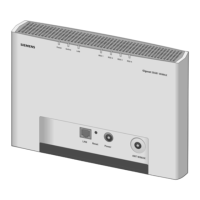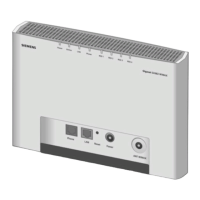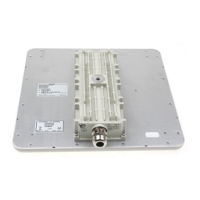111
Glossary
Gigaset SE361 WLAN / englisch / A31008-M1067-R101-1-7619 / glossary.fm / 30.10.2006
Schablone 2004_12_27
Router
A router directs data packets from one local network (LAN) to another via the fastest
route. A router makes it possible to connect networks that have different network tech-
nologies. For example, it can link a local network via Ethernet or WLAN technology to
the Internet.
See also Bridge, Switch, Hub, Gateway
Server
A server makes a service available to other network components (Clients). The term
"server" is often used to refer to a computer or PC. However, it can also mean an appli-
cation that provides a particular service such as DNS or a Web service.
SMTP
Simple Mail Transfer Protocol
The SMTP Protocol is part of the TCP/IP protocol family. It governs the exchange of elec-
tronic mail on the Internet. Your Internet Provider gives you access to an SMTP server.
SNMP
Simple Network Management Protocol
The SNMP Protocol is part of the TCP/IP protocol family. It provides a simple procedure
for network administration based on a system of shared information for management
data and network management messages (known as traps), and reports the occurrence
of events within the monitored network (e.g. an alarm message or notification of con-
figuration changes).
SSID
Service Set Identifier
The SSID is used to identify the stations in a wireless network (WLAN). All wireless net-
work components with the same SSID form a common network. The SSID can be
assigned by the network operator.
Static IP address
A static IP address is assigned to a network component manually during network con-
figuration. Unlike a Dynamic IP address, a static IP address never changes.
Subnet
A subnet divides a network into smaller units.
Subnet mask
The subnet mask determines how many parts of a network's IP address represent the
network address and how many parts represent the PC address.
The subnet mask in a network administered by the Gigaset SE361 WLAN is always
255.255.255.0. This means that the first three parts of the IP address form the network
address and only the final part is used for the PC address. In this case, the first three
parts of the IP address of all network components are therefore always the same.

